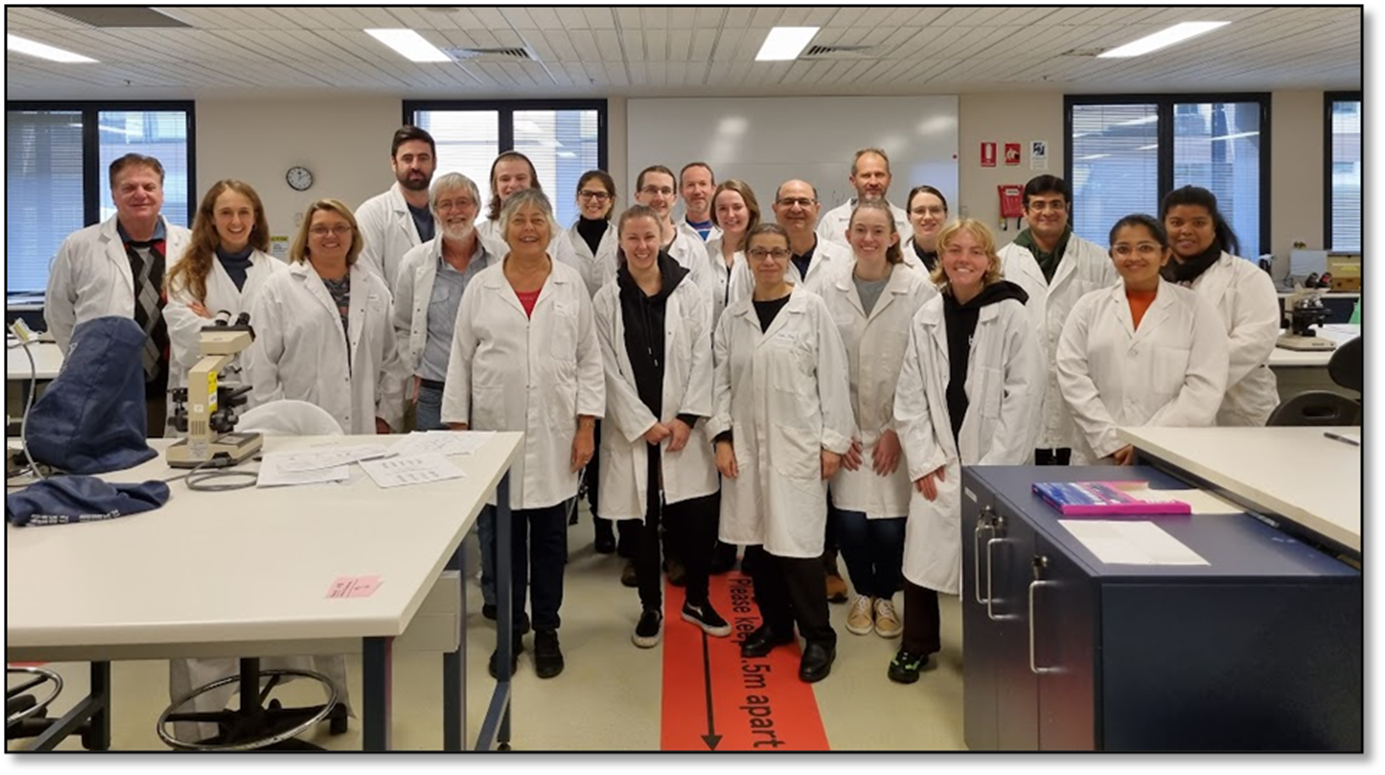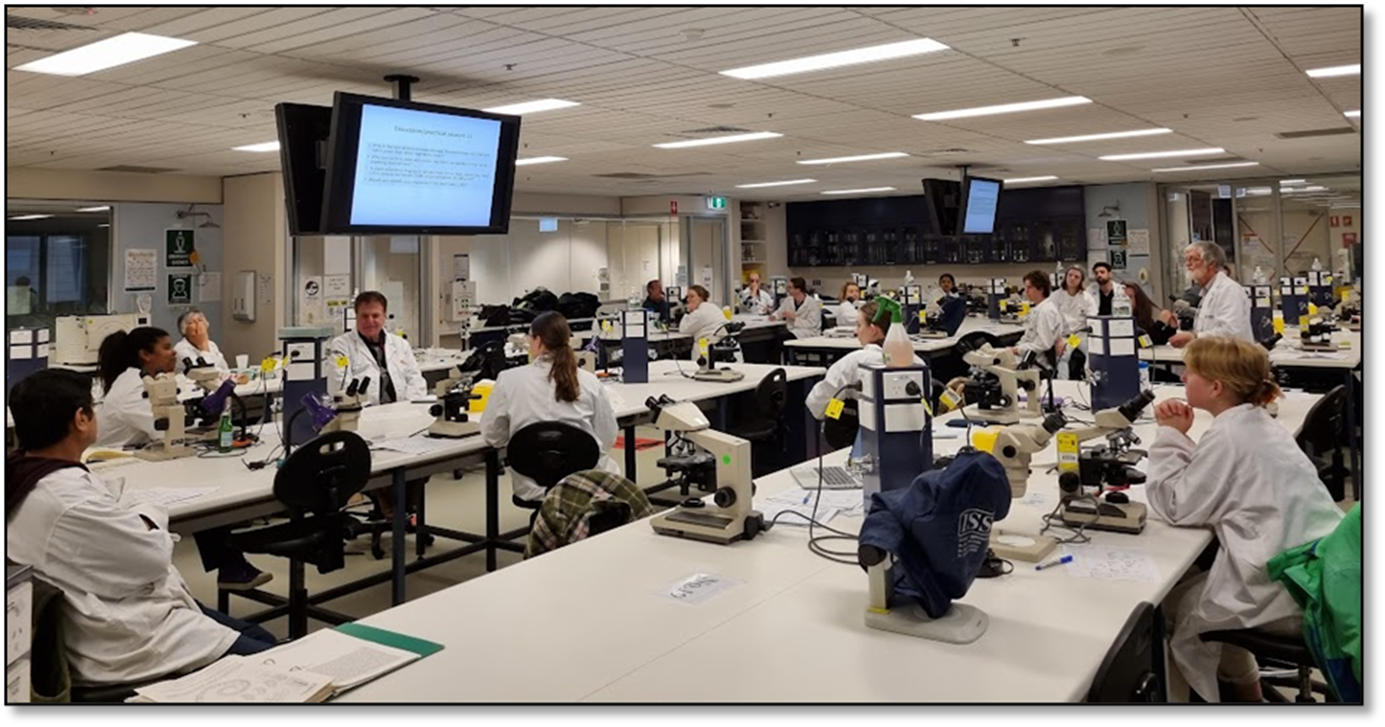

Mastering nematode morphology: a student’s perspective
July 7, 2022

The Crawford Fund’s NSW Committee recently funded a training workshop titled ‘Identification and quantification of plant-parasitic nematodes for diagnostic purposes.’ It was run at the University of Sydney by eminent nematologists Drs Graham and Marcelle Stirling.
The primary goal of the training was to build capacity around prominent pests in Australia and neighbouring-countries, capable of causing widespread crop destruction and economic losses.
A fantastic blog about the experience has been provided by university student, Lucy Horne, who attended the three-day event.
As a third-year undergraduate student, I had the awesome opportunity of attending a nematode training course facilitated by the University of Sydney and NSW DPI Plant Health Diagnostic Service (PHDS). This was an exciting opportunity for me to learn more about nematodes, since my knowledge of nematodes was limited (they’re worms right?). Not only are nematodes microscopic worm-like animals which live primarily in soil, feeding off bacteria, fungi, other microorganisms and sometimes plant roots, they are also the most abundant multicellular animals on earth (who knew?!). Our focus was on the nematodes which feed on plant roots: the plant parasitic nematodes, particularly those which are prominent pests in Australian agriculture, capable of causing widespread crop destruction and economic losses (powerful miniscule creatures indeed!).
The class was titled ‘Identification and quantification of plant-parasitic nematodes for diagnostic purposes’ and was run at the University of Sydney by Drs Graham and Marcelle Stirling, Australia’s eminent nematologists.
Apart from myself, the participants included other students, members of the PHDS team, other public servants, and some private industry consultants. The primary goal of the training was to learn key morphological characteristics of 17 plant parasitic nematodes to a genus level. What a challenge we were given over 3 days!

On day 1, through lots of hands-on work and interesting lectures delivered by Graham, we learnt about key nematode pests, particularly root-knot nematodes, soil sampling practices and nematode extraction and quantification methods. I particularly enjoyed practising my dissection skills of root-knot (Meloidogyne javanica) egg galls under the microscope and examining its juvenile stages more closely. Male M. javanica nematodes are not often observed in samples (females dominate the realm of nematodes), so it was important for me to become as familiar as possible with the females and juveniles, especially. I thought it was a great first day!
On day 2, I brought in some soil from my garden, trying my best to collect a representative sample. Alas it was not as easy as I thought it would be from that part of my garden (sorry Graham!). In class, under the guidance of Graham, I extracted most nematodes (~60%) from my sample using the simple white-head tray method. Lucky for me, my soil was extremely healthy, according to Graham, as it contained a great diversity of free-living and parasitic nematodes, approximately 5000 nematodes per 200g of soil (excellent for me, I should begin planning which veggies to plant…). Marcelle even found an elusive pin nematode, a Paratylenchus, which we had not been able to observe thus far. Great success!
We also learnt about nematode damage thresholds, nematode-crop resistance and tolerance, interpreting diagnostic results and how to best relay this information to clients. That evening, thanks to some financial support from the Crawford Fund and APPS, we attended a networking event at a funky bar in Redfern where I was able to get to know and bond with the other participants and reflect on the course together. Thanks Crawford and APPS!
On our final day, Graham gave a great lecture on nematode biosecurity in Australia and then we continued with our nematode examinations.
Throughout the whole course, we were free to do as we pleased, which I really enjoyed, as I was able to move at my own pace and work on tricky morphological IDs, read literature to deepen my understanding, and ask questions when they came up. It is a difficult task to find a single parasitic nematode of importance for a particular crop from a sample, such as the cyst nematode (Heterodera), which has major implications for different industries.
Overall, the training was a fantastic opportunity for me to gain new knowledge about nematodes and improve my diagnostic skills and capability within plant pathology in ways which will help growers improve their management of crop diseases. I was able to meet awesome people, make new connections in the industry, and gain enthusiasm for nematology as an important aspect of plant pathology and biosecurity.
Many thanks to Graham and Marcelle for their time and incredible generosity, and to everyone who made the training possible; I am very much looking forward to other training in the future.




